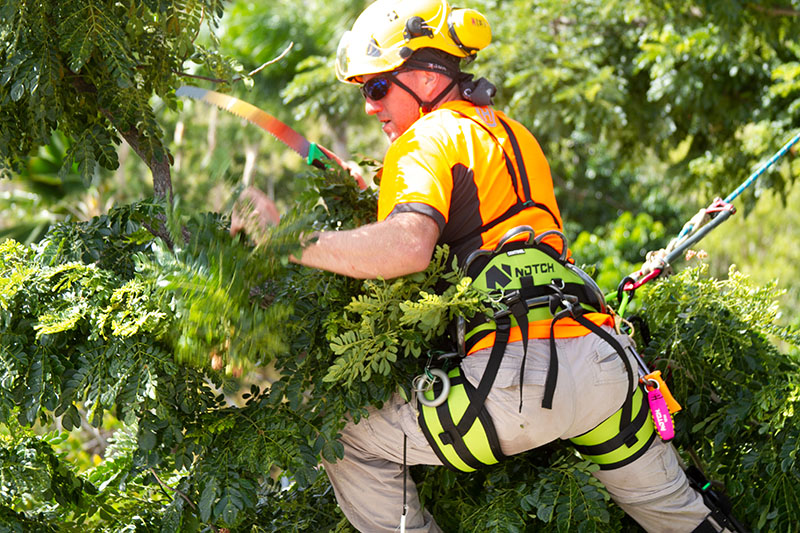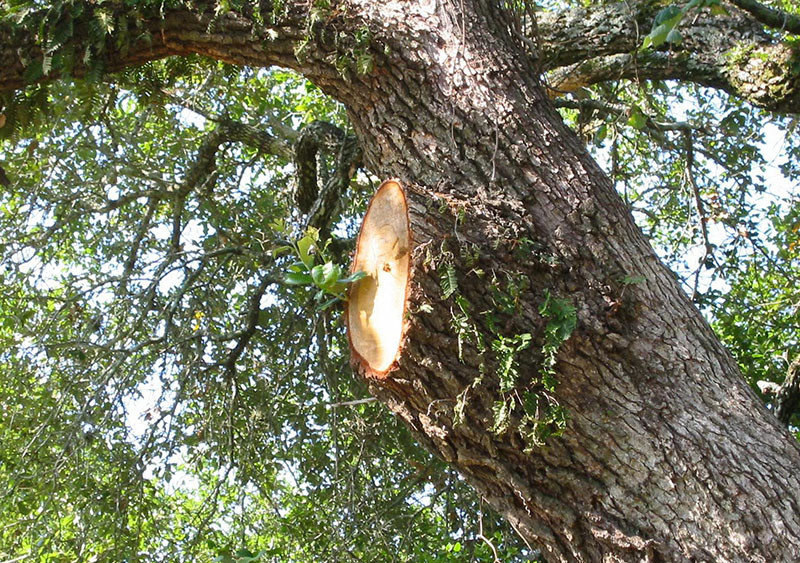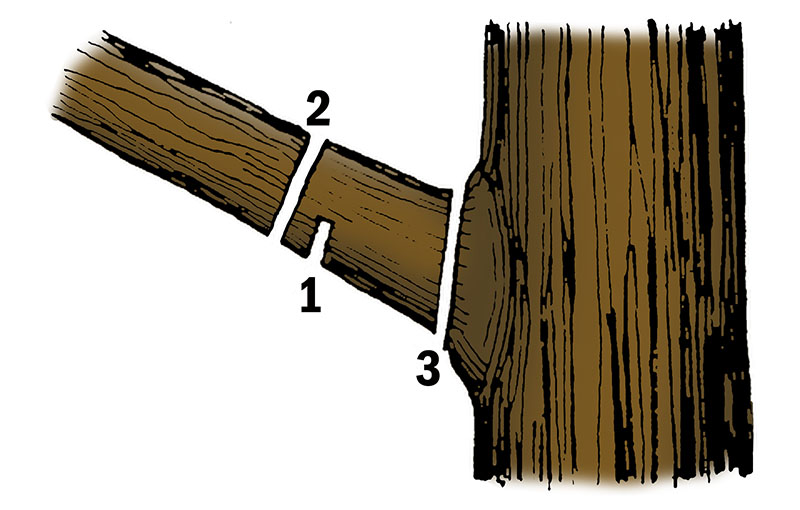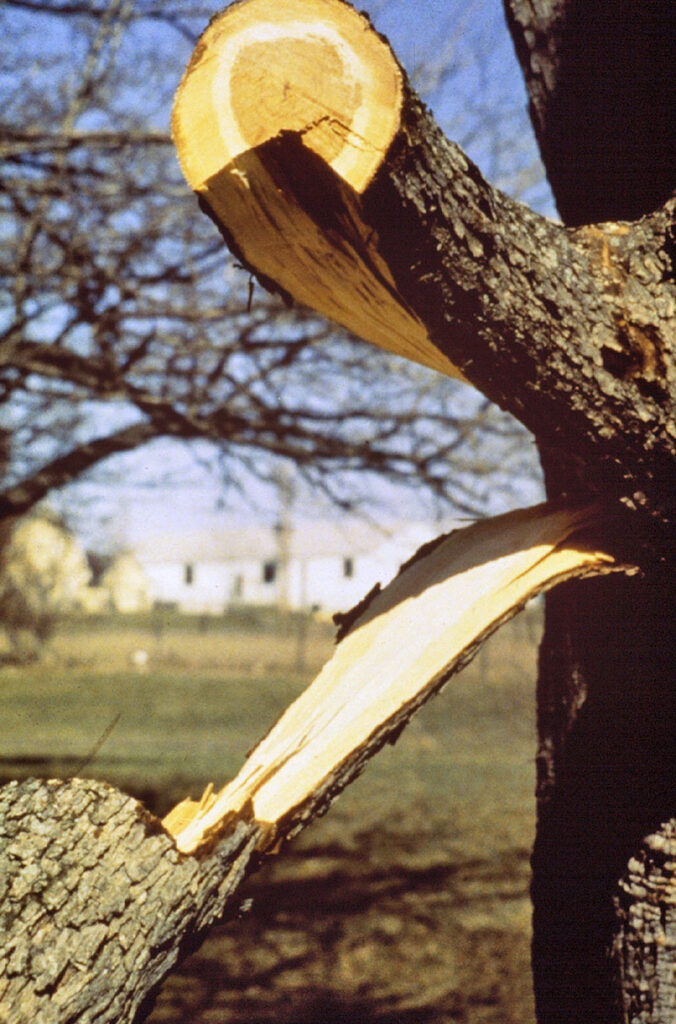Pruning Cuts to Avoid
Here are the most common mistakes and what to do instead
Este es nuestro intento de convertir las historias en audio español usando Inteligencia Artificial. Aún así le recomendamos que reconfirme ciertas palabras clave y temas. ArborTIMES no garantiza ni se responsabiliza de la conversión del inglés al español de los relatos.
Hasty decisions and a lack of knowledge can have drastic long-term consequences on the health of a tree. Before you resort to topping or lion’s tailing, chances are there’s a better solution.

A fundamental aspect of tree care, pruning is both an art and a science. When done correctly, pruning has the power to enhance a tree’s structural integrity, appearance, and overall vitality.
But even seasoned arborists can make mistakes that can harm the trees they intend to nurture.
Ready to explore the top pruning mistakes in the tree care industry? Here’s why it’s critical to make cuts wisely, the consequences of a bad cut, and correct techniques to ensure healthy, thriving trees.

Why the Right Cut Matters
Pruning is a delicate balance meant to promote proper growth, maintain the tree’s health, and ensure it meets its objective. This means cuts should be made with both intention and caution.
There are four methods of pruning, according to the American National Standards Institute (ANSI) A300 document:
Cleaning Dead, diseased, or hazardous branches are pruned to improve the health of a tree and to reduce the risk of accidents.
Thinning Balancing the tree’s branches to prevent future leaning or tree instability and to allow additional light to filter through the canopy.
Raising Pruning for clearance by removing overhanging branches that obstruct roads, walkways, and sightlines, or pose safety hazards.
Reduction Pruning to reduce the tree’s height or spread.
No matter what the reason is for pruning a particular tree, the right cut is the key to a safe and healthy tree that meets its objective.
Following Nature
Pruning should address any present issues while keeping the tree’s structure as close as possible to its natural state, according to Dane Buell, past chairman of the ANSI A300 committee.
Understanding how trees grow in nature, preserving leader branches, and anticipating how a tree’s growth will respond to pruning is essential for making the right cuts.
“You’re going to mirror how that tree would grow in the forest and improve its structure and sustainability,” Buell says. “Trees that grow in urban landscapes are not the same as trees that grow in the forest, so you’re mirroring what would happen in nature to give that tree a better structure.”
When issues arise, such as the presence of large, low branches limiting accessibility to walkways or roads, proper pruning practices will maintain the tree’s natural structure, reduce future hazards, and limit the amount of stress to the tree.
Stay Goal-Oriented
When making cuts, arborists first assess how the tree might continue to grow in the future.
One of the reasons urban trees grow differently than trees in a forest is due to the excess light around the radius of the tree. This often leads to two or more dominant stems within a tree, as well as large, low branches.
Young, urban trees should be pruned long before they get to the point where drastic cuts are needed, says Edward Gilman, PhD, author of “An Illustrated Guide to Pruning,” widely regarded as the tree care industry’s most comprehensive pruning guide.
“If you prune low branches and co-dominant stems earlier,” Gilman says, “it pushes more growth up into the permanent canopy instead of letting it grow into a low limb that eventually gets in the way.”
Making cuts that promote the health of the tree and keep its objective in mind takes time and skill. While it’s not always possible to start early with pruning, proper cuts lead to better results and a tree that can thrive for many years.
Cardinal Sins of Pruning
Standards for tree pruning are laid out in ANSI standards, but unfortunately, these aren’t always followed by tree care professionals. This often means cuts are made that can negatively impact the health of the tree or fail to align with the tree’s objective.
Here are the top pruning mistakes to avoid:
Topping
This is a pruning practice that aims to decrease the height of a tree. Topping involves cutting off the upper portion of a tree’s main branches or central leader. This practice is detrimental because it removes the tree’s natural crown, disrupts its structure, and encourages weak and rapid regrowth.

Topping is usually done because people are worried that a tree is too tall. This is often the result of picking the wrong tree for a space. It can also be required in situations where, perhaps, a tree is encroaching on power lines or other structures.
In general, however, topping a tree unnecessarily exposes it to disease, pests, decay, and other structural risks, which can create larger problems than simply having a tall tree.
“Trees do grow tall, and they could be at a low risk relative to their size,” Buell says. “But once you’ve cut that tree in half, now you’ve predisposed it to branch attachments that are very poor as well as decay.”
Topping can also disrupt the natural growth and development of a tree, leading to the need for far more restorative work down the road, according to Buell. That’s because topping activates the tree to respond by rapidly growing weak, thin branches that will require intensive pruning and management.
“In order to restore trees from topping cuts, you need to come back over time and really make some strategic cuts that will regain the tree’s natural form,” he says.

Lion’s tailing
Lion’s tailing involves the excessive removal of inner branches, leaving tufts of foliage only at the ends of large branches. If pruning isn’t prioritized on a tree while it’s young, this can lead to the growth of large, low branches.

Eventually, these branches could become hazardous or create clearance issues on paths and streets below them. That’s why arborists sometimes resort to lion’s tailing and simply remove all of those low branches.
However, this practice is actually counter-productive to creating a safe environment around the tree, says Gilman.
“It forces the tree to grow even taller and puts a lot of stress on the mechanics of the tree’s connections,” he says. “It ultimately makes the tree somewhat unstable, and that gets worse over time.”
Buell adds that the practice of lion’s tailing is also detrimental to a tree’s health and growth, since it reduces the tree’s ability to photosynthesize effectively.
“Lion’s tailing is a horrible practice, and it’s a very inappropriate approach to pruning,” he says.
Stub cuts and flush cuts
How well a cut is made can significantly impact how well a tree heals from the wound. Unfortunately, poor cuts — like stub and flush cuts — are common pruning mistakes that leave the tree susceptible to disease and decay while preventing it from proper healing.

Stub cuts occur when the pruning cut is made too far outside of the branch collar. In other words, too much of a stub is remaining after the cut. This prevents a tree from developing the callus tissue and wound wood needed to seal the surface of the cut.
Because compartmentalization is delayed, a tree is open to decay for longer periods of time, according to Gilman. Exposure to oxygen can stimulate the growth of bacteria and fungi.
“It gives the fungi and bacteria more time to work on the tree’s natural barriers,” says Gilman, “compared to making a cut at the right spot, which encourages closure of the wound sooner and therefore cutting off the oxygen.”
Conversely, flush cuts occur when the pruning cut is made too close to the primary branch and the secondary branch collar is removed. This can damage the tree’s natural defense mechanisms and permanently removes the natural barrier of the branch protection zone.
“There are four different ways trees compartmentalize decay that can come in from a pruning cut,” says Dr. Gilman. “The only thing left when you make a flush cut is the weakest barrier and that’s plugging, which is the weakest process or defense the tree has. So, a flush cut removes that capacity that the tree normally would have if you made the cut at the right spot.”

Pruning Large Branches
Arborists should only cut large branches on trees as a last resort when no other pruning methods can help resolve the issue with the tree or help it to meet its objective.
“You’re making this huge wound, and the tree has very weak defenses against that type of wound,” Gilman says. “That’s got implications, and decaying the trunk is probably the biggest deal.”
Removing large branches can sometimes be unavoidable, however, since they often become hazardous or are simply in the way. That’s when proper cuts are crucial to protect the health of the tree.
Improperly removing a large-diameter branch can cause extensive damage to the tree. This is particularly true if the cut is made in a way that causes the branch to break at an unintended point and tear the tree’s bark in the process.
The Right Cuts
Proper pruning techniques are the cornerstone of tree care. Every tree care professional should be familiar with the essential practices and methods in ANSI’s A300 document. It should especially be a top priority for arborists.
“They’re standards for developing specifications for performing tree work,” Buell says. “Pruning is part of that, and developing good specifications that can both be understood by a consumer and executed by a crew is probably the most important thing any tree care professional could do.”
To promote the growth and health of trees while preserving their natural beauty and structural integrity, here are the cuts and techniques that elevate tree pruning to an art form.
Three-Cut Method
By preventing unnecessary damage, the three-cut technique contributes to the tree’s overall vitality and longevity. It involves three sequential steps:

First, an undercut is made on the branch, a short distance out from the branch collar. This helps to prevent tearing and damage to the bark.
Second, a top cut is made slightly outside of the undercut to remove the bulk of the branch.
Lastly, the remaining stub is removed with a clean cut just outside the branch collar. This aids in proper wound closure and minimizes the risk of disease or decay.

Lion’s Tailing Alternative
Since lion’s tailing is such a damaging practice, Dr. Gilman suggests employing what he calls “structural pruning” instead. Structural pruning spreads the pruning load over the height of the tree instead of simply removing only large diameter low branches.
“Take some of that dose of pruning and apply it to the upright and ends of the main branches,” he says. “So, you’re getting your clearance by taking some low secondary branches off, but you’re also going up on the upright portion of the primaries and cutting them back using reduction cuts.”
Proper Heading Cuts
There are certain situations where heading cuts may be necessary, according to Buell, particularly when it comes to unavoidable situations like ice storms and extreme weather events.
If a good portion of a tree’s scaffold branches have broken, for example, consider making heading cuts.
“Heading is an appropriate method of pruning, whereas topping is not,” he says. “There are times where heading cuts are very appropriate if they’re going to be managed and it’s to meet an appropriate objective.”
Once those heading cuts are made, however, they must be managed moving forward to restore the tree to its original structure, Buell adds. This can include things like thinning and selectively removing the sprouts that emerge over time in order to restore the canopy to a natural condition.

The Bottom Line
Pruning is an essential skill for tree care professionals, but it must be executed with care and precision.
Proper training and developing specifications that are aligned with ANSI standards are crucial for ensuring that pruning is done properly and safely.
Avoiding the cardinal sins of tree pruning and following correct techniques will not only ensure the health and longevity of the trees under your care, but also contribute to the overall well-being of our urban forests.


